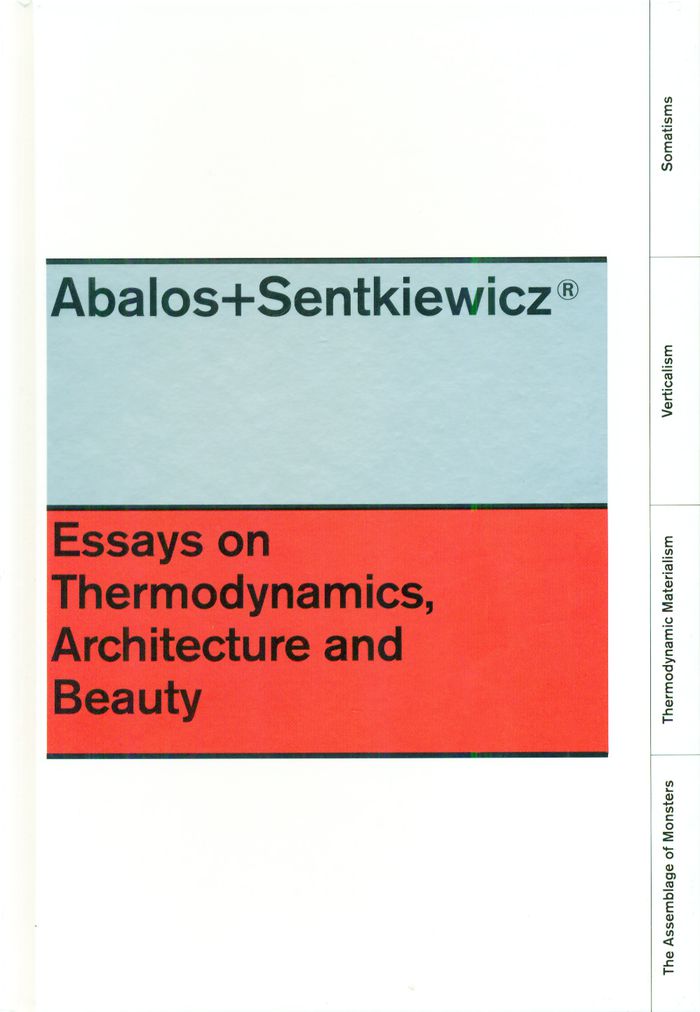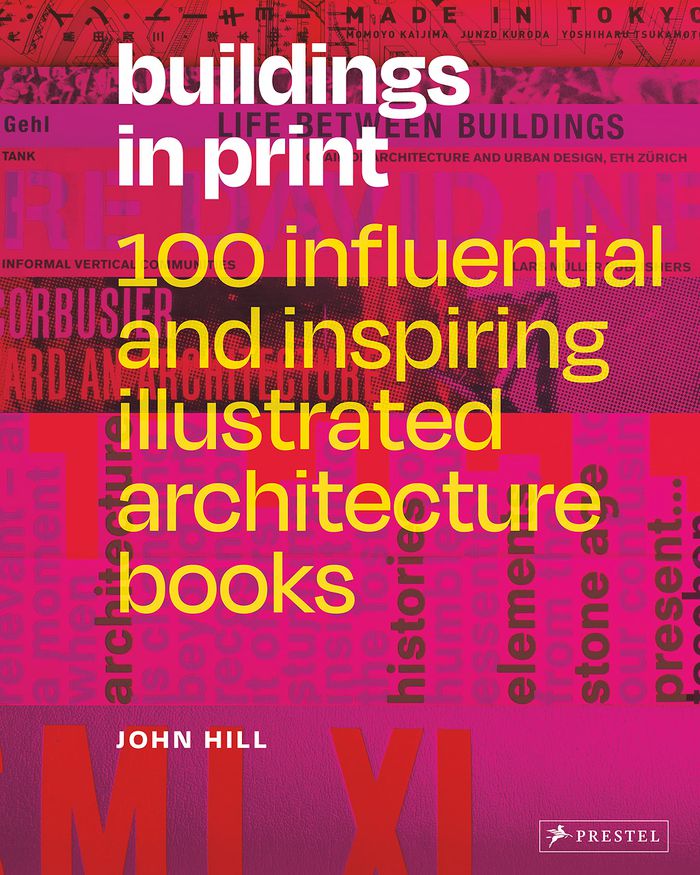livres
Description:
348 pages : illustrations, plan ; 20 cm.
Ostfildern : Jan Thorbecke Verlag, [2021], ©2021
Meister Ludwig - Peter Parler - Anton Pilgram : Architekt und Bildhauer? Zu einem Grundproblem der Mediävistik / drei Studien von Achim Hubel, Jens Rüffer und Gábor Endrődi.
Actions:
Exemplaires:
Description:
348 pages : illustrations, plan ; 20 cm.
livres
Ostfildern : Jan Thorbecke Verlag, [2021], ©2021
livres
Description:
xv, 157 pages : illustrations (chiefly color), maps ; 23 x 25 cm.
Abingdon, Oxon ; New York, NY : Routledge, 2017., ©2017
Expanding disciplinarity in architectural practice : designing from the room to the city / Tom Holbrook.
Actions:
Exemplaires:
Description:
xv, 157 pages : illustrations (chiefly color), maps ; 23 x 25 cm.
livres
Abingdon, Oxon ; New York, NY : Routledge, 2017., ©2017
livres
Description:
214 pages : illustrations ; 22 cm
Newcastle upon Tyne, England : Cambridge Scholars, 2011.
Mental life of the architectural historian : re-opening the early historiography of modern architecture / by Gevork Hartoonian.
Actions:
Exemplaires:
Description:
214 pages : illustrations ; 22 cm
livres
Newcastle upon Tyne, England : Cambridge Scholars, 2011.
livres
Description:
422 pages : illustrations ; 23 cm
New York : Perennial, 2005., ©2004
The curious life of Robert Hooke : the man who measured London / Lisa Jardine.
Actions:
Exemplaires:
Description:
422 pages : illustrations ; 23 cm
livres
New York : Perennial, 2005., ©2004
livres
Description:
386 pages, 8 pages of plates : illustrations (some color), facsimiles, plans, portraits ; 24 cm.
[Rome] : École française de Rome, 2017.
L'architecture morte ou vive : les infortunes de la coupole de Saint-Pierre de Rome au XVIIIe siècle / Pascal Dubourg Glatigny.
Actions:
Exemplaires:
Description:
386 pages, 8 pages of plates : illustrations (some color), facsimiles, plans, portraits ; 24 cm.
livres
[Rome] : École française de Rome, 2017.
livres
Description:
viii, 547 pages : illustrations (some color) ; 25 cm
Cambridge, Massachusetts : The Belknap Press of Harvard University Press, 2019.
Gropius : the man who built the Bauhaus / Fiona MacCarthy.
Actions:
Exemplaires:
Description:
viii, 547 pages : illustrations (some color) ; 25 cm
livres
Cambridge, Massachusetts : The Belknap Press of Harvard University Press, 2019.
$54.95
(disponible en magasin)
Résumé:
Essays on Thermodynamics, Architecture and Beauty, is a book that unfolds arguments and designs around the concept of "thermodynamic beauty". This new aesthetic category opens up new and unexpected directions to the architect's work, connecting architecture and thermodynamics without giving up the tectonic tradition. The compendium will be developed through the concepts(...)
Architecture, monographies
décembre 2015
Abalos + Sentkiewicz: essays on thermodynamics, architecture and beauty
Actions:
Prix:
$54.95
(disponible en magasin)
Résumé:
Essays on Thermodynamics, Architecture and Beauty, is a book that unfolds arguments and designs around the concept of "thermodynamic beauty". This new aesthetic category opens up new and unexpected directions to the architect's work, connecting architecture and thermodynamics without giving up the tectonic tradition. The compendium will be developed through the concepts of Somatisms, Monsters Assemblage, Verticalism and Thermodynamic Materialism, summarizing design strategies, and opening new territories at the scales of building, public space and landscape.
Architecture, monographies
$79.00
(disponible sur commande)
Résumé:
This volume showcases the best illustrated architecture books ever published. The author, John Hill, is the founder of the influential architecture blog "A Daily Dose of Architecture," which recently shifted course to focus entirely on architecture books of all kinds. His selection for this volume spans centuries, continents, and genres to include Le Corbusier’s "Towards(...)
Buildings in print: 100 influential and inspiring illustrated architecture books
Actions:
Prix:
$79.00
(disponible sur commande)
Résumé:
This volume showcases the best illustrated architecture books ever published. The author, John Hill, is the founder of the influential architecture blog "A Daily Dose of Architecture," which recently shifted course to focus entirely on architecture books of all kinds. His selection for this volume spans centuries, continents, and genres to include Le Corbusier’s "Towards a New Architecture," "Project Japan" by Rem Koolhaas, "Atlas of Another America: An Architectural Fiction by Keith Krumwiede," "X-Ray Architecture" by Beatriz Colomina and Thomas Wolfe’s "From Bauhaus to Our House." The books selected are organized into the categories of Manifestos, Histories, Education, Housing, Monographs, Buildings, Exhibitions, Building Cities, and Critiques, and each one has a reproduction of the book’s cover along with selected spreads which are accompanied by Hill’s informed, personal, and engaging take on what makes the title unique and indispensable. In addition, sidebar "Top 10" lists from many of today’s leading critics and architects are scattered throughout. Capturing the best of Hill’s insightful and curious mind, this invaluable resource will broaden the world of anyone interested in the field of architecture– and provide irrefutable arguments for these works’ continued relevance.
livres
$45.95
(disponible sur commande)
Résumé:
In a daring revisionist history of modern architecture, Mark Wigley opens up a new understanding of the historical avant-garde. He explores the most obvious, but least discussed, feature of modern architecture: white walls. Although the white wall exemplifies the stripping away of the decorative masquerade costumes worn by nineteenth-century buildings, Wigley argues that(...)
White walls, designer dresses : the fashioning of modern architecture
Actions:
Prix:
$45.95
(disponible sur commande)
Résumé:
In a daring revisionist history of modern architecture, Mark Wigley opens up a new understanding of the historical avant-garde. He explores the most obvious, but least discussed, feature of modern architecture: white walls. Although the white wall exemplifies the stripping away of the decorative masquerade costumes worn by nineteenth-century buildings, Wigley argues that modern buildings are not naked. The white wall is itself a form of clothing -- the newly athletic body of the building, like that of its occupants, wears a new kind of garment and these garments are meant to match. Not only did almost all modern architects literally design dresses, Wigley points out, their arguments for a modern architecture were taken from the logic of clothing reform. Architecture was understood as a form of dress design. Wigley follows the trajectory of this key subtext by closely reading the statements and designs of most of the protagonists, demonstrating that it renders modern architecture's relationship with the psychosexual economy of fashion much more ambiguous than the architects' endlessly repeated rejections of fashion would suggest. Indeed, Wigley asserts, the very intensity of these rejections is a symptom of how deeply they are embedded in the world of clothing. By drawing on arguments about the relationship between clothing and architecture first formulated in the middle of the nineteenth century, modern architects in fact presented a sophisticated theory of the surface, modernizing architecture by transforming the status of the surface. "White Walls, Designer Dresses" shows how this seemingly incidental clothing logic actually organizes the detailed design of the modern building, dictating a system of polychromy, understood as a multicolored outfit. The familiar image of modern architecture as white turns out to be the effect of a historiographical tradition that has worked hard to suppress the color of the surfaces of the buildings that it describes. Wigley analyzes this suppression in terms of the sexual logic that invariably accompanies discussions of clothing and color, recovering those sensuously colored surfaces and the extraordinary arguments about clothing that were used to defend them.
livres
octobre 2001, Cambridge, Mass.
Théorie de l’architecture
livres
$79.50
(disponible sur commande)
Résumé:
In a daring revisionist history of modern architecture, Mark Wigley opens up a new understanding of the historical avant-garde. He explores the most obvious, but least discussed, feature of modern architecture: white walls. Although the white wall exemplifies the stripping away of the decorative masquerade costumes worn by nineteenth-century buildings, Wigley argues that(...)
White walls, designer dresses : the fashioning of modern architecture
Actions:
Prix:
$79.50
(disponible sur commande)
Résumé:
In a daring revisionist history of modern architecture, Mark Wigley opens up a new understanding of the historical avant-garde. He explores the most obvious, but least discussed, feature of modern architecture: white walls. Although the white wall exemplifies the stripping away of the decorative masquerade costumes worn by nineteenth-century buildings, Wigley argues that modern buildings are not naked. The white wall is itself a form of clothing -- the newly athletic body of the building, like that of its occupants, wears a new kind of garment and these garments are meant to match. Not only did almost all modern architects literally design dresses, Wigley points out, their arguments for a modern architecture were taken from the logic of clothing reform. Architecture was understood as a form of dress design. Wigley follows the trajectory of this key subtext by closely reading the statements and designs of most of the protagonists, demonstrating that it renders modern architecture's relationship with the psychosexual economy of fashion much more ambiguous than the architects' endlessly repeated rejections of fashion would suggest. Indeed, Wigley asserts, the very intensity of these rejections is a symptom of how deeply they are embedded in the world of clothing. By drawing on arguments about the relationship between clothing and architecture first formulated in the middle of the nineteenth century, modern architects in fact presented a sophisticated theory of the surface, modernizing architecture by transforming the status of the surface. "White Walls, Designer Dresses" shows how this seemingly incidental clothing logic actually organizes the detailed design of the modern building, dictating a system of polychromy, understood as a multicolored outfit. The familiar image of modern architecture as white turns out to be the effect of a historiographical tradition that has worked hard to suppress the color of the surfaces of the buildings that it describes. Wigley analyzes this suppression in terms of the sexual logic that invariably accompanies discussions of clothing and color, recovering those sensuously colored surfaces and the extraordinary arguments about clothing that were used to defend them.
livres
décembre 1995, Cambridge, Mass.
Théorie de l’architecture

